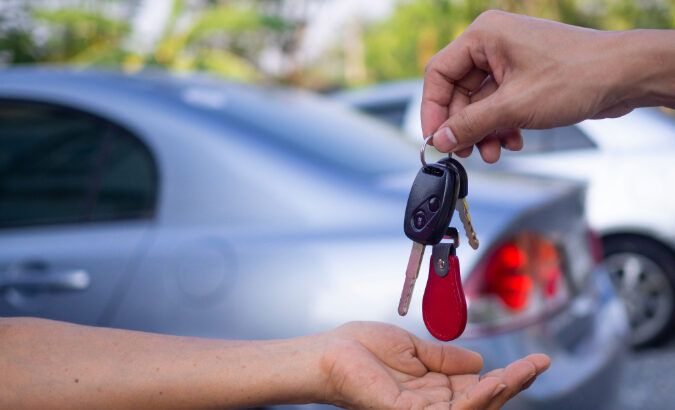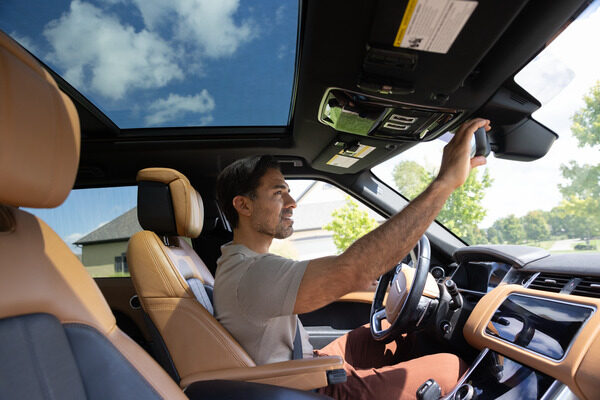
Most teenagers dream about their first cars long before they get the keys, and they remember it for the rest of their lives. Whether it’s a brand-new ride or just new to them, there’s nothing quite like that first experience of owning a car.
While teens may have certain features in mind, such as a powerful stereo system and great rims, parents usually approach the decision somewhat differently. When it comes to buying a car for a new driver, a little research and a lot of common sense go a long way.
Here are five important things to consider before you and your teen decide on a vehicle:
Car size
When it comes to teen drivers, you don’t want a car that’s too small. “Take a Goldilocks mentality when getting a car for a young person,” advises Tom McParland, a professional car-buying consultant who runs Automatch Consulting. “Cars that are too small don’t offer a lot of protection in a crash; however, you don’t want a novice driver in the biggest vehicle you can get your hands on.”
Small cars often don’t fare well in collisions, and young drivers are more likely to get into accidents. Look for a mid-size car that’s big enough to provide necessary protection but not so large it might be hard for an inexperienced driver to handle. A larger car has a slower reaction time when it comes to braking and turning, which can be a recipe for disaster when combined with a new driver’s response to unexpected situations, McParland says. “Normally I recommend compact to mid-size cars for teens,” he added. “They’re large enough to be safe, but small enough to be easily maneuverable. They also tend to be less expensive to insure and maintain.”
Used or new car
An older car is likely to cost less up front, but it might also come with unexpected repair bills later on. An older car won’t necessarily have some of the safety features you’re looking for, and they may not handle as well. A brand-new car is generally going to be pricier to insure, in part because of repair and replacement costs. So a middle-aged car (five- to seven-years old) is a good bet.
Look at reviews on sites, such as Consumer Reports, to find out what kind of track record the vehicle has for reliability and owner satisfaction. Then, if you’re thinking about buying, have a trusted mechanic inspect the vehicle. This helps you make sure that it’s in good driving condition.
Cost of owning a car
This goes beyond what you’re actually paying for the car. Talk with your insurance agent to find out what your insurance premiums could be for your teen driver. Then, factor in gas, maintenance and potential repairs. One simple way to add up all your costs is by using an car operating cost calculator.
Easy to drive car
Novice drivers and muscle cars may not be a great combination. For your teen’s first car, it could be best to stick to a vehicle with a lower-powered four-cylinder engine that’s easier to control. This might invite less temptation to speed or participate in other unsafe driving behaviors.
Safety
Safety in a car is essential, so look for features like electronic stability control (ESC). “ESC is so crucial because it helps a driver keep control when they’re doing things like going around a curve too fast or driving on slippery roads,” explains Russ Rader, a senior vice president at the Insurance Institute for Highway Safety (IIHS). “It helps prevent the loss-of-control crashes that teens are more likely to get into.” ESC has been required in cars since 2012, but many automakers were including it before then. So if parents are considering a car built prior to 2012, Rader recommends searching which cars have ESC.
Other important safety features include antilock brakes, airbags and backup cameras. Some of these come standard in newer cars; check to see which features are included in the cars you’re considering. “What it comes down to is that you want to buy as much safety as you can afford,” Rader says. If the difference between cars comes down to a price jump that you’re comfortable with, remember that investing in safety features is always a good deal.
Check out the history of the models you’re interested in by visiting Safercar.gov. You can find and compare ratings for virtually any car. Look for cars that score well. Since inexperienced drivers are more likely to have accidents, they’ll benefit from having greater protection in the event of an accident.
Your teen will always remember their first car – make those memories both good and safe by choosing the right car. Another way to protect your teen’s safety is by purchasing the right car insurance for your needs. Let Nationwide help you find a policy that works for your family.



